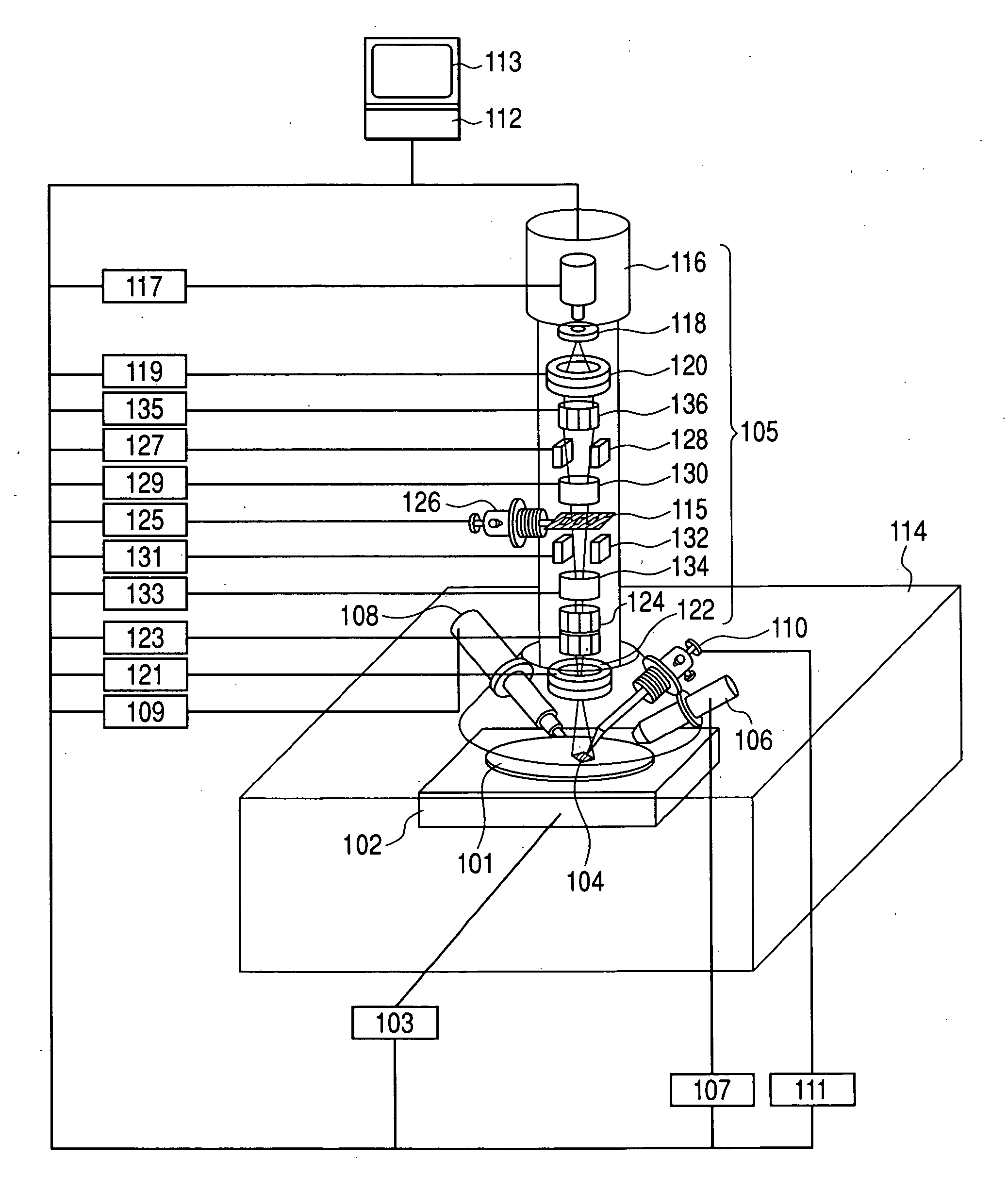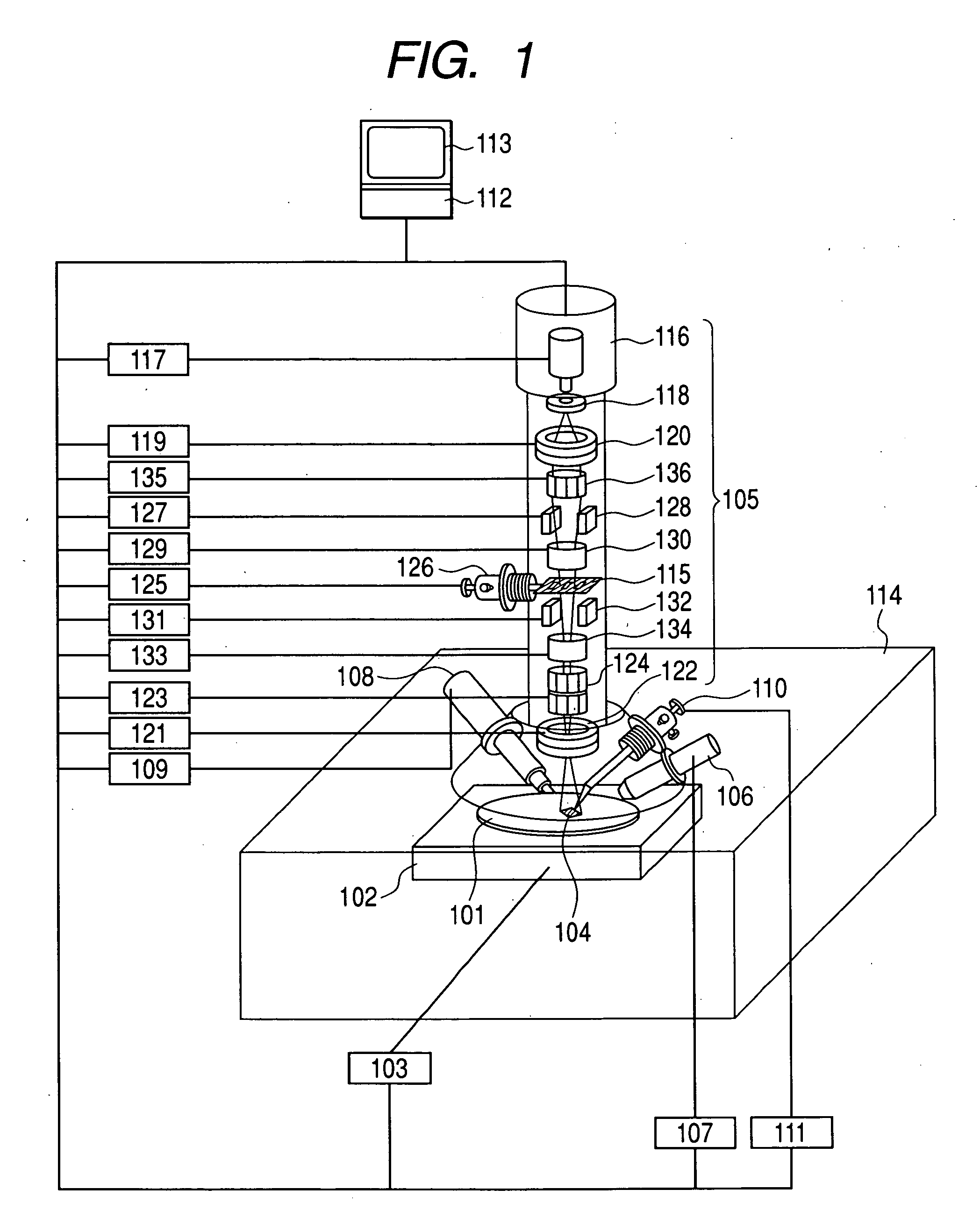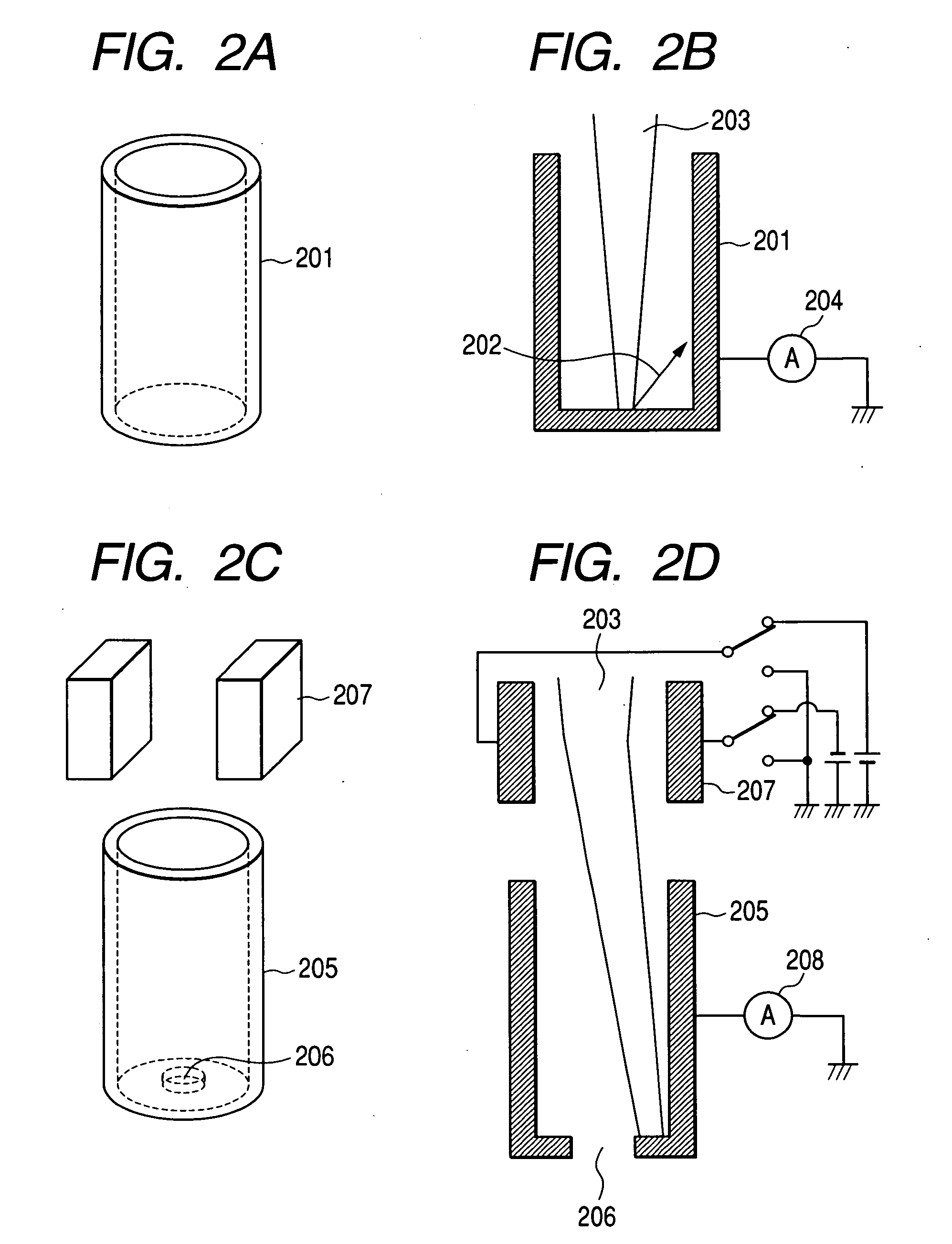Apparatus for ion beam fabrication
a technology of ion beams and apparatuses, applied in the direction of material analysis using wave/particle radiation, instruments, nuclear engineering, etc., can solve the problems of inability to compensate beams have grown seriously anomalous, and no compensation can be made by changing the scanning speed, etc., to achieve stable operation of apparatuses, improve the yield of semiconductor processes, and high reliability
- Summary
- Abstract
- Description
- Claims
- Application Information
AI Technical Summary
Benefits of technology
Problems solved by technology
Method used
Image
Examples
first embodiment
[0035]In the present embodiment, we will describe the configuration of the PJIB device according to the present invention.
[0036]The PJIB device shown in FIG. 1 includes a movable specimen stage 102 for carrying the substrate of a specimen 101 such as a semiconductor wafer and the like, a specimen-stage position controller 103 for controlling the position of the specimen stage 102 for identifying the observation and processing position of the specimen 101, an ion-beam irradiating optical system 105 for processing the specimen 101 by irradiating the same with ion beams 104, and a secondary-electron detector 106 for detecting the secondary electrons emitted by the specimen 101. The secondary-electron detector 106 is controlled by a controller for secondary-electron detector 107. An assisting gas supplying source 108 for supplying the assist gas used for the ion beam assist deposition or the ion beam assist etching is controlled by a controller for assisting gas supplying source 109. An...
embodiment 2
[0075]In this embodiment, we will describe an apparatus for ion beam fabrication for realizing detailed control of the service life of the projection mask by the present invention.
[0076]As described in First Embodiment, the projection mask 115 is a part having a short service life among the constituent parts in the device. Accordingly, while the replacement of any mask on which a failure of ion beam current has been found as shown in FIG. 1 is a way to deal with the situation, the estimation of its service life followed by its replacement in good time is effective for preventing any processing failures and for assuring a stable operation. However, leaving too much margin leads to a problem in that its service life is reduced. For this reason, it is important to estimate as precisely as possible its service life. In First Embodiment we described the relationship between the illumination ion beam Ib2 and the specimen processing by means of Formula 4. The same principle applies to the ...
third embodiment
[0083]In this embodiment, we will describe a FIB device for detecting anomalies in ion beams according to the present invention.
[0084]In the First Embodiment and the Second Embodiment, we described the example of PJIB. However, similar detection of ion beam can be realized in the case of FIB also. The FIB device shown in FIG. 20 includes a movable specimen stage 2102 for placing the specimen substrate of a specimen 2101 such as semiconductor wafer and the like, a specimen-stage position controller 2103 for controlling the position of a specimen stage 2102 for specifying the observation and fabricating position of the specimen 2101, an ion-beam irradiating optical system 2105 for irradiating the specimen 2101 with ion beam 2104 and fabricating the same, and a secondary-electron detector 2106 for detecting the secondary electrons coming from the specimen 2101. The secondary-electron detector 2106 is controlled by a controller 2107 for secondary-electron detector. An assisting gas supp...
PUM
 Login to View More
Login to View More Abstract
Description
Claims
Application Information
 Login to View More
Login to View More - R&D
- Intellectual Property
- Life Sciences
- Materials
- Tech Scout
- Unparalleled Data Quality
- Higher Quality Content
- 60% Fewer Hallucinations
Browse by: Latest US Patents, China's latest patents, Technical Efficacy Thesaurus, Application Domain, Technology Topic, Popular Technical Reports.
© 2025 PatSnap. All rights reserved.Legal|Privacy policy|Modern Slavery Act Transparency Statement|Sitemap|About US| Contact US: help@patsnap.com



